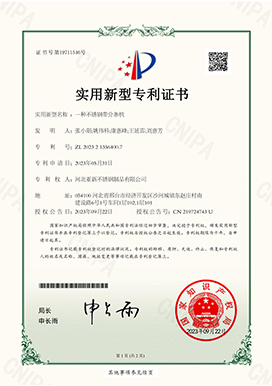- Phone:+86-17331948172 +86-0319-8862898
- E-mail: inquiry@puxingclamp.com
Dec . 15, 2024 14:32 Back to list
stainless hose clamps marine factories
Stainless Steel Hose Clamps in Marine Industries
In the marine industry, resilience and durability are paramount. One of the often-overlooked components that contribute significantly to the safety and efficiency of marine applications is the stainless steel hose clamp. These clamps play a crucial role in securing hoses and providing reliable connections, ensuring that vessels operate smoothly even in the harshest environments.
The Importance of Stainless Steel
Stainless steel is the material of choice for hose clamps, particularly in marine applications, due to its exceptional resistance to corrosion. The marine environment presents numerous challenges, including exposure to saltwater, humidity, and varying temperatures, all of which can lead to gradual degradation of components not specifically designed for such conditions. By using stainless steel, manufacturers ensure that hose clamps maintain their integrity and functionality over time, reducing the likelihood of failure and the need for frequent replacements.
Marine Hose Clamps Design and Function
Marine hose clamps are designed to provide a tight grip on hoses, preventing leaks and maintaining pressure within systems. They come in various styles, including worm drive, T-bolt, and spring clamps, each suited to different applications. Worm drive clamps, for instance, feature a screw mechanism that allows for easy adjustment and a secure fit. T-bolt clamps are particularly useful for larger hoses and high-pressure applications, providing a robust and uniform tightening force. On the other hand, spring clamps are ideal for quick installations but may not offer the same level of security for high-stakes situations.
Manufacturing Process
stainless hose clamps marine factories

The manufacturing process of stainless steel hose clamps involves several key steps to ensure their durability and effectiveness. First, high-quality stainless steel is sourced, typically grades 304 or 316, which offer superior corrosion resistance. The steel is then cut, shaped, and formed into the desired clamp design. This involves precision machining to maintain consistent dimensions and tolerances, which are crucial for optimal performance.
After shaping, the clamps undergo finishing processes, such as polishing or passivation, which enhance their resistance to corrosion and improve aesthetic appeal. Rigorous quality control measures are implemented to ensure that each product meets safety and performance standards, particularly critical in marine contexts where equipment failures can have severe consequences.
Applications Beyond Marine
While stainless steel hose clamps are essential in marine applications, their versatility means they are also utilized across various industries, including automotive, construction, and HVAC. However, the unique demands of the marine environment, such as exposure to saltwater and extreme weather conditions, necessitate a specialized focus on quality and durability for products used in this field.
Conclusion
In conclusion, stainless steel hose clamps are vital components in the marine industry, providing secure and reliable connections essential for the safe operation of vessels. Their resistance to corrosion and thoughtful design make them suitable for harsh environments, ensuring longevity and reliability. As technology and manufacturing processes continue to evolve, the future of stainless steel hose clamps looks promising, with potential innovations aimed at enhancing their performance even further. For marine manufacturers and operators, investing in high-quality, durable hose clamps is a proactive step towards ensuring operational safety and efficiency in a challenging environment.
-
Heavy Duty Hose Clamps: Premium Stainless Steel & Adjustable
NewsAug.19,2025
-
Large Stainless Steel Adjustable American Type Hose Clamp - Hebei Pux Alloy Technology Co., Ltd
NewsAug.18,2025
-
Large Stainless Steel Adjustable Hose Clamp - Hebei Pux Alloy|Durable Corrosion Resistance&Adjustable Design
NewsAug.18,2025
-
Large Stainless Steel Adjustable Hose Clamp - Hebei Pux Alloy Technology Co., Ltd
NewsAug.18,2025
-
American Style Adjustable Hose Clamps for Pipe & Radiator
NewsAug.18,2025
-
Large Stainless Steel Adjustable American Type Hose Clamp - Hebei Pux Alloy Technology Co., Ltd.|Corrosion Resistance, Adjustable Design
NewsAug.17,2025




